
Moroccan Military Forum alias FAR-MAROC
Royal Moroccan Armed Forces Royal Moroccan Navy Royal Moroccan Air Forces Forces Armées Royales Forces Royales Air Marine Royale Marocaine
|
|
| | Armes made in Spain |  |
|
+7Fahed64 sirono Nano PGM RED BISHOP Fremo Yakuza 11 participants | |
| Auteur | Message |
|---|
Invité
Invité
 |  Sujet: Armes made in Spain Sujet: Armes made in Spain  Ven 29 Mai 2009 - 20:17 Ven 29 Mai 2009 - 20:17 | |
| commençons par les armes navales et plus précisemment le catalogue de NAVANTIA Frégates:F-310 Fridtjof Nansen Class - Citation :
- The F310-class frigates have been designed to provide Anti-Air Warfare (AAW) and Anti-Submarine Warfare (ASW) capabilities. A flight deck and a hangar will be provided for a single NH90 helicopter. The ship will also feature ESSM surface-to-air missiles and the AEGIS weapon system with the downsized AN/SPY-1F radar antenna. The F310-class frigates will be the first warship all over the world integrating the SPY-1F antenna.
The F310-class frigates will also feature reduced radar cross section for improved survivability. The Norwegian Navy ordered five Nansen-class frigates with deliveries beginning in 2005 through 2009. These frigates will be built between Spain, IZAR as main integrator, and Norway.
On February 17, 2005, Lockheed-Martin released that jointly with IZAR the first AEGIS weapon system aboard the Fridtjof Nansen frigate successfully underwent initial activation at IZAR's shipyards in Ferrol, Spain. This event marked the beginning of the integrated weapon system testing for the F310-class frigates.
On April 5, 2006 the first Fridtjof Nansen frigate was handed over to the Royal Norwegian Navy after six years since the program inception in 2000. The official ceremony took place at Ferrol shipyards in Northern Spain. Accommodation: Crew 146 Guns: Main Gun Caliber 76 mm Dimensions: Beam 16.8 m, Draft 4.9 m, Length 123 m Weights: Full Displacement 5,130 t Performance: Cruise Speed 18 kt (33 kph), Top Speed 26 kt (48 kph) 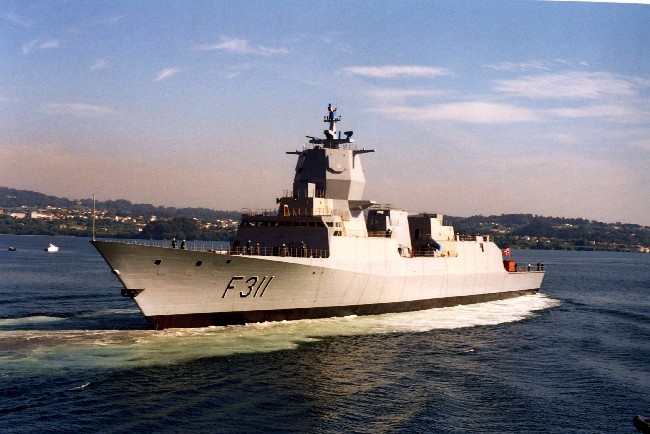 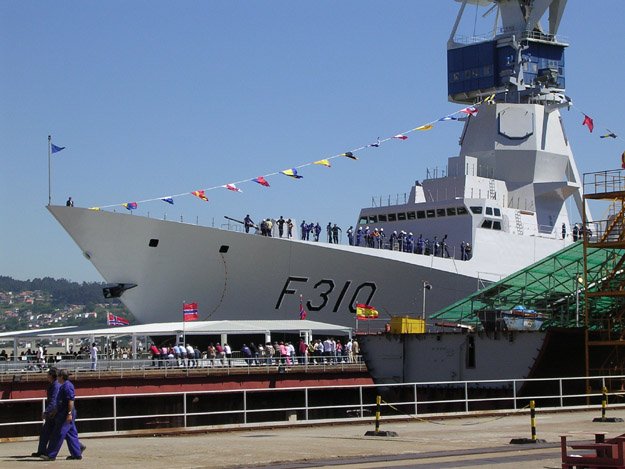  F-100 Alvaro de Bazán Class F-100 Alvaro de Bazán Class - Citation :
- The F100-class frigates have designed to provide area air defense against advanced airborne threats such as supersonic missiles and stealth aircraft with secondary capability against surface ships and submarines. These frigates will also perform as crisis management center and flag ship for the Spanish Navy or Multinational strike groups. According to Spanish Government Sources, they are also intended as a ship-based ballistic missile defense system, but that seems to be unrealistic due to SPY-1D limitations.
The Alvaro de Bazan ships are the first European warships mounting the AEGIS weapon system. Four AN/SPY-1D radar antennas have been provided to these ships as well as associated equipment. A 48-cell MK41 VLS has been installed on the stem deck of the F100 frigates containing Standard SM-2 Block IIIA and ESSM missiles. In addition 8 Harpoon missiles, torpedoes and a 76mm naval gun will provide anti-ship capability. A helicopter hangar and a flight deck located at the stern of the ship will make possible to operate a single SH-60B LAMPS III helicopter for anti-submarine (ASW) anti-surface warfare (ASuW).
The F100-class frigates will also feature two 20mm Meroka close-in weapon system and reduced radar cross section for improved survivability. There are plans to integrate the Fire Scout UAV into these ships but this option has not been confirmed yet.
The Spanish Navy has ordered 4 F100 frigates to enter service by 2005 replacing five aging Knox-class frigates currently in service. They will operate in both blue water and shallow water environments. In May 2005 the Spanish government approved the construction of the fifth F100-class frigate (F105) to be commissioned in 2012.
Accommodation: Crew 229
Guns: Main Gun Caliber 127 mm
Number of Weapons: 56
Dimensions: Height 9.8 m, Length 147 m, Width 17.5 m
Weights: Max Weight 5,800 t
Performance: Cruise Speed 9 mps (18 kt), Max Range 8,300 km (4,482 nm), Top Speed 15 mps (29 kt)
Power: Power 47,500 shp  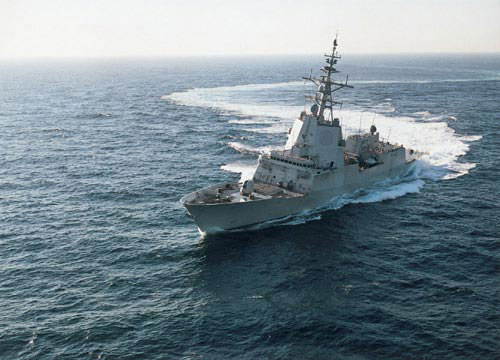 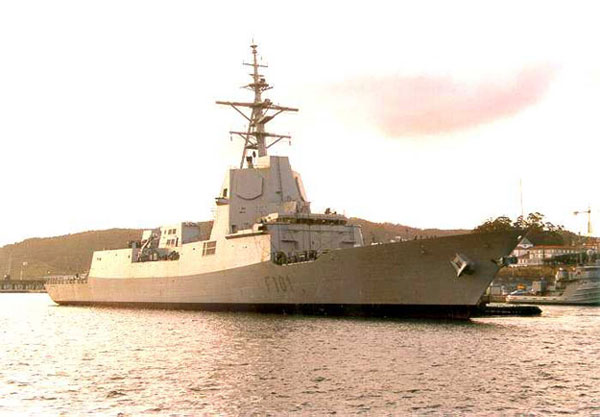  |
|   | | Invité
Invité
 |  Sujet: Re: Armes made in Spain Sujet: Re: Armes made in Spain  Ven 29 Mai 2009 - 20:20 Ven 29 Mai 2009 - 20:20 | |
| |
|   | | Invité
Invité
 |  Sujet: Re: Armes made in Spain Sujet: Re: Armes made in Spain  Ven 29 Mai 2009 - 20:23 Ven 29 Mai 2009 - 20:23 | |
| sous-marinsScorpene  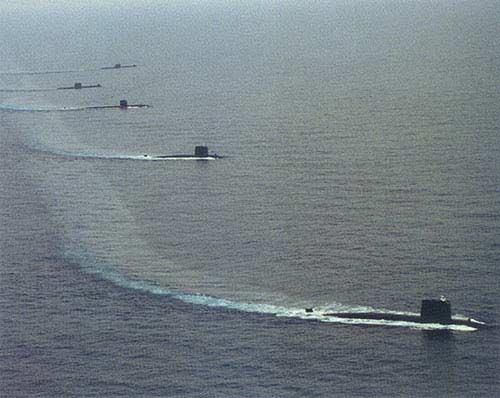 Length overall 63.5 m Breadth 6.2 m Draught 5.4 m Hull diameter 6.2 m Displacement surfaced 1,430 t Displacement submerged 1,570 t Speed surfaced 12 kn Speed submerged 21 kn Cruising range 8,500 nm S-80
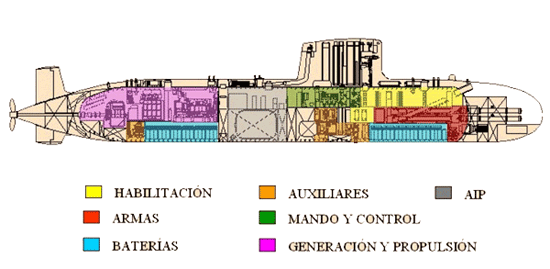  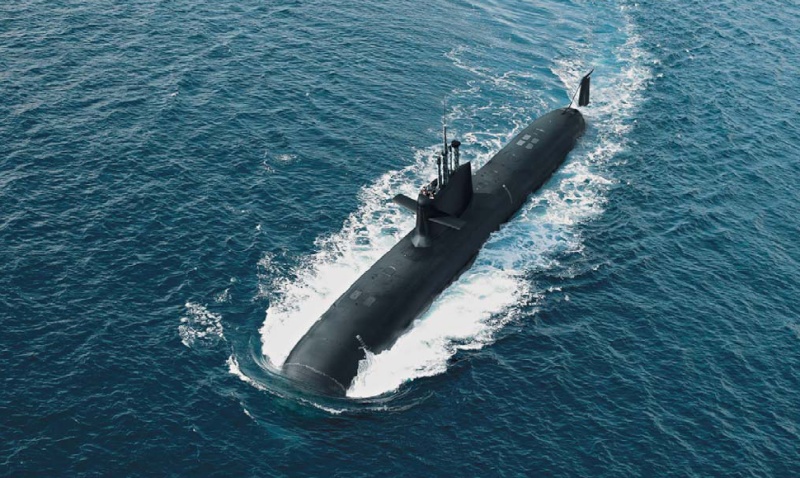  Length overall 71.05 m Resistant hull diameter 7.3 m Maximum beam 11.68 m Displacement submerged 2,426 t Displacement surface 2,200 t Speed submerged 19 kn Speed surface 12 kn Crew 32+8 persons |
|   | | Invité
Invité
 |  Sujet: Re: Armes made in Spain Sujet: Re: Armes made in Spain  Sam 30 Mai 2009 - 2:14 Sam 30 Mai 2009 - 2:14 | |
| |
|   | | Invité
Invité
 |  Sujet: Re: Armes made in Spain Sujet: Re: Armes made in Spain  Lun 21 Sep 2009 - 14:33 Lun 21 Sep 2009 - 14:33 | |
| |
|   | | Invité
Invité
 |  Sujet: Re: Armes made in Spain Sujet: Re: Armes made in Spain  Jeu 26 Nov 2009 - 13:14 Jeu 26 Nov 2009 - 13:14 | |
| - Citation :
- ASCOD/PIZARRO

The ASCOD (Austrian-Spanish Cooperative Development) family of fighting vehicles is marketed by ASCOD AIE with headquarters based in Madrid, Spain. ASCOD is a jointly owned company set up by Steyr-Daimler-Puch AG of Vienna, Austria and General Dynamics, Santa Barbara Sistemas (GDSBS) of Madrid, Spain. In November 2003, General Dynamics took over Steyr-Daimler-Puch; both companies now form General Dynamics European Land Systems (GDELS), along with MOWAG of Switzerland.
As well as the infantry fighting vehicle, the ASCOD family includes: LT 105 light tank, anti-aircraft missile carrier, anti-aircraft gun system, anti-tank guided missile carrier, mortar carrier, repair and recovery vehicle, logistics carrier, command and communication carrier, artillery observation post and ambulance.
ASCOD infantry fighting vehicle
The infantry fighting vehicle is in service with the Spanish Army where it is called the Pizarro and with the Austrian Army where it is known as the Ulan.
An initial 123 Pizarro infantry fighting vehicles and 23 command and communications vehicles were ordered in 1996 and delivered to the Spanish Army by the end of 2002.
A follow-on contract – for 106 IFVs, five command post vehicles, 28 forward observer vehicles, eight recovery vehicles and one combat engineer vehicle – was placed in January and signed in December 2003. An additional 80 vehicles was ordered in February 2008, to bring the total fleet to 374. Delivery of the second phase vehicles is planned for 2008–2013.
The second phase vehicles, Pizarro II, will have the same MTU Series 199 engine which was fitted on the Ulan, with a power output of 530kW.
112 Ulan vehicles were delivered to the Austrian Army between 2002–2005.
In June 2008, GDELS, in conjunction with KMW, announced Donar, a medium-weight 155 mm self-propelled artillery system based on the KMW PzH2000 artillery system integrated with the ASCOD 2 chassis. A prototype has begun mobility and firing trials in Germany.
Armament
Turret control is electro-mechanical and the turret is fitted with a turret drive stabilisation system from Curtiss-Wright Controls of Gastonia, North Carolina. The weapon system is stabilised in two axes, which allows the vehicle to engage targets stationary or on the move. Elevation is from -10° to +50° with a 360° traverse.
The vehicle's main armament is a 30mm dual-feed, gas-operated Mauser mk30-2 automatic cannon with a 7.62mm coaxial machine gun. The 30mm gun has a rate of fire of 800 rounds a minute and can fire a range of ammunition including APFSDS rounds. The vehicle carries 200 rounds of 30mm and 700 rounds of 7.62mm ammunition ready to fire, and a store of up to 205 rounds of 30mm and up to 2,200 rounds of 7.62mm ammunition.
Self-protection
The hull and turret are constructed from all-welded steel armour, which provides protection against 14.5mm armour-piercing incendiary rounds over the forward 60° arc and all round protection against 7.62mm weapon attack.
"ASCOD can be fitted with laser warning system."
Additional ballistic protection is available against up to 30mm APFDS (armour-piercing fin-stabilised discarding-sabot) rounds fired from a 1,000m range over the forward 60° arc, and all round protection against 14.5mm armour-piercing incendiary (API) rounds from a range of 500m.
Two sets of three smoke grenade launchers are installed on each side of the turret. ASCOD fighting vehicles can be fitted with laser warning system and NBC (nuclear, biological, chemical) detection system.
Fire control and observation
Spanish Pizarro vehicles are fitted with the mk10 fire control system from Indra (formerly Enosa), which provides shoot-on-the-move capability and 0.1 mil gun aiming. The mk10 has a full solution digital ballistic computer, day channel, thermal channel and laser rangefinder.
The first batch of 123 vehicles are fitted with the SVT-02 first-generation thermal imager. The mk10 has since been upgraded with a second-generation imager, the VC2, which will be fitted on subsequent vehicles. The VC2 thermal imager is based on a 240×4 detector array and operates in the 7.5 to 10.5 micron spectral band. It has wide field of view of 12.3°×7.7° and narrow FOV of 4.1°×2.6° (azimuth × elevation).
In November 2004, Indra was awarded a contract for upgrading the fire control system on the Pizarro. The programme includes upgrades to the stabilisation and aiming system and next-generation thermal imager.
Austrian Ulan vehicles are equipped with the Kollsman day / night range sight (DNRS) which has a digital computer, day channel and thermal imaging sight with an integrated laser rangefinder. The 8 to 12 micron thermal imager is dual field of view and has magnifications of ×2.8 and ×8.4. An automatic target tracker inputs targeting data to the line-of-sight servo system and into the turret drive.
The commander has a periscopic day sight, a television monitor displaying the image from the gunner's thermal sight and six unity vision periscopes.
Propulsion
The ASCOD is fitted with an MTU 8V-183-TE22 8-V90 diesel engine, rated 600hp, and a Renk HSWL 106C hydro-mechanical transmission, and torsion bar suspension.
MTU has developed a new more powerful engine (530kW at 2,300rpm), the 8V 199, which will be fitted to Ulan vehicles.
LT 105 light tank
The LT 105 light tank has been selected by the Royal Thai Marine Corps which requires 15 tanks, plus one command and one recovery vehicle. It is fitted with a three-man turret such as the 105 low-recoil force turret by Oto Melara, General Dynamics low-profile turret or the LIW turret. The tanks for Thailand will have the LIW turret. Main armament is a 105mm semi-automatic low recoil tank gun with a 7.62mm coaxial machine gun.
 http://www.army-technology.com/projects/ascod/ http://www.army-technology.com/projects/ascod/
Voici l'ASCOD 2 présenté par General Dynamics pour le concours britannique FRES face au CV-90 suédois de Bae Systems. - Spoiler:
|
|   | | Invité
Invité
 |  Sujet: Re: Armes made in Spain Sujet: Re: Armes made in Spain  Dim 4 Avr 2010 - 16:39 Dim 4 Avr 2010 - 16:39 | |
| |
|   | | Invité
Invité
 |  Sujet: Re: Armes made in Spain Sujet: Re: Armes made in Spain  Dim 4 Avr 2010 - 16:40 Dim 4 Avr 2010 - 16:40 | |
| |
|   | | Invité
Invité
 |  Sujet: Re: Armes made in Spain Sujet: Re: Armes made in Spain  Dim 4 Avr 2010 - 16:41 Dim 4 Avr 2010 - 16:41 | |
| |
|   | | Invité
Invité
 |  Sujet: Re: Armes made in Spain Sujet: Re: Armes made in Spain  Dim 4 Avr 2010 - 16:42 Dim 4 Avr 2010 - 16:42 | |
| |
|   | | Invité
Invité
 |  Sujet: Re: Armes made in Spain Sujet: Re: Armes made in Spain  Dim 4 Avr 2010 - 16:44 Dim 4 Avr 2010 - 16:44 | |
| |
|   | | Invité
Invité
 |  Sujet: Re: Armes made in Spain Sujet: Re: Armes made in Spain  Dim 4 Avr 2010 - 16:51 Dim 4 Avr 2010 - 16:51 | |
| |
|   | | Invité
Invité
 |  Sujet: Re: Armes made in Spain Sujet: Re: Armes made in Spain  Dim 4 Avr 2010 - 16:52 Dim 4 Avr 2010 - 16:52 | |
| |
|   | | Invité
Invité
 |  Sujet: Re: Armes made in Spain Sujet: Re: Armes made in Spain  Dim 4 Avr 2010 - 16:54 Dim 4 Avr 2010 - 16:54 | |
|  the barracuda germany and spanish |
|   | | Invité
Invité
 |  Sujet: Re: Armes made in Spain Sujet: Re: Armes made in Spain  Dim 4 Avr 2010 - 16:56 Dim 4 Avr 2010 - 16:56 | |
|  the eurofighter 2000 germany spain italy and UK |
|   | | Invité
Invité
 |  Sujet: Re: Armes made in Spain Sujet: Re: Armes made in Spain  Dim 4 Avr 2010 - 16:57 Dim 4 Avr 2010 - 16:57 | |
|  atack tiger the germany france and spanish the eurocopter |
|   | | Invité
Invité
 |  Sujet: Re: Armes made in Spain Sujet: Re: Armes made in Spain  Dim 4 Avr 2010 - 16:58 Dim 4 Avr 2010 - 16:58 | |
|  llama pistol is the spain |
|   | | Invité
Invité
 |  Sujet: Re: Armes made in Spain Sujet: Re: Armes made in Spain  Dim 4 Avr 2010 - 17:01 Dim 4 Avr 2010 - 17:01 | |
|  españa fabrique sous permission the g36 |
|   | | Invité
Invité
 |  Sujet: Re: Armes made in Spain Sujet: Re: Armes made in Spain  Sam 17 Avr 2010 - 14:07 Sam 17 Avr 2010 - 14:07 | |
|  Pour Younes Pour Younes - Citation :
- The Paz satellite: a defence and security solution provided by Astrium España
Astrium España signed a contract with Hisdesat on 6 November 2008 to develop and build the first Spanish Earth radar observation satellite Paz. The signing ceremony was attended by Spanish Defence Minister Carme Chacón.
Paz is one component of the Spanish National Earth Observation Programme. The budget for the Paz satellite is estimated at €160 million, and covers the flight and ground segments, as well as the launch. The Spanish Ministry of Defence will provide €135 million of the funding, whilst the company Hisdesat will finance the rest.

Given that the satellite will be used for multiple applications in the field of security and defence, and could have potential civil applications, its image acquisition functions will be extremely diverse.
The industrial framework is as follows:
- Astrium España is the prime contractor, responsible for developing and building the satellite within a period of 48 months.
- The Spanish National Institute for Aerospace Technology (INTA) will be responsible for the ground segment, which includes two control stations: one in Torrejón near Madrid and the other in Maspalomas, Gran Canaria.
- Hisdesat will be the satellite’s operator, responsible for all commercial exploitation. The Spanish Ministry of Defence will be one of Hisdesat’s main customers, and one of the main beneficiaries of the satellite’s capabilities.
The satellite will be capable of providing images in any type of weather conditions, day and night, and will primarily fulfil the security and defence needs of the Spanish government.
The satellite
The Paz satellite will be equipped with an X-band synthetic aperture radar (SAR) instrument, mounted on a TerraSAR-X recurrent platform, a hexagonal carbon-fibre structure. The TerraSAR-X platform will be provided by Astrium GmbH. The instrument’s radar antenna will incorporate printed-radiator technology developed by Astrium at its Madrid-Barajas site which has already been successfully used on other programmes such as Envisat, Spainsat, Inmarsat and Galileo.
The estimated mass of the satellite will be 1,200kg, and its solar array will generate power of 850W. The instrument’s printed-radiator planar phased-array radar will be 4.8m long and 0.7m wide. It will be designed to offer different modes of operation, with different swath widths, and various resolutions of up to a metre.
As satellite prime contractor, Astrium España is responsible for the systems engineering, as well as satellite integration and testing activities, satellite validation, and placing into orbit in a fully operational state.
The mission

Among a whole host of other applications, the geo-information services to be provided by the mission will be used to enhance surveillance of Spanish territory and other parts of the globe, control of Spanish borders, operational capability of the Spanish armed forces, evaluation of natural disasters, and risk and crisis management.
Launch of the satellite is scheduled for 2012. Paz will then circle the Earth 15 times a day in a sun-synchronous polar orbit, at an altitude of 505km. From this position, the satellite will be able to supply an average of 200 images a day, and to cover an area of around 300,000km2.
It has been indicated that the satellite will also be used, for example, in the fight against piracy in the waters off Somalia – where a Spanish fishing boat was hijacked last summer – or for the monitoring and control of the illegal traffic of immigrants in Spanish waters. The operator Hisdesat has also stated that the satellite will provide services to Spanish embassies, the Ministry of the Interior, the ocean research vessel Hespérides, and to various other countries such as the United States, Mexico, Belgium and Denmark.
An investment for the future
The other satellite in the Spanish National Earth Observation Programme is Ingenio, financed by the Spanish Ministry of Industry, for which Astrium España is also the prime contractor. This second satellite will have an optical instrument and will mainly serve a civil purpose. The Spanish National Earth Observation Programme will help to improve the natural resource management, the fight against climate change, infrastructure planning, and control and monitoring of natural disasters such as forest fires. The programme will give Spain a fully independent operational satellite observation capability.
This programme consolidates Astrium España’s predominance as the Spanish satellite prime contractor. “We have come a long way,” said Astrium España’s CEO Pedro Méndez, “since we began development of the Minisat-01 satellite in 1995, through our more recent first-rate performance building the instrument for the SMOS (Soil Moisture and Ocean Salinity) mission, to get to where we are now: recognised as the premier Spanish company for complete systems activities.”
The Spanish National Earth Observation Programme will provide returns for Spanish industry worth €70 million, allowing many of the Spanish companies involved in the programme to acquire new capabilities that will make them more competitive on the global space market. The programme will create 1,000 highly skilled jobs.
From 2012, the two satellites together will provide high-resolution imaging coverage of any point on the Earth every 24 hours. Spain will become the first European country to have a dual-use (optical and radar) observation system serving both civil and military purposes.
 http://www.astrium.eads.net/en/news/the-paz-satellite-a-defence-and-security-solution-provided-by-astrium-espana.html http://www.astrium.eads.net/en/news/the-paz-satellite-a-defence-and-security-solution-provided-by-astrium-espana.html |
|   | | Invité
Invité
 |  Sujet: Re: Armes made in Spain Sujet: Re: Armes made in Spain  Sam 17 Avr 2010 - 14:19 Sam 17 Avr 2010 - 14:19 | |
| |
|   | | Invité
Invité
 |  Sujet: Re: Armes made in Spain Sujet: Re: Armes made in Spain  Sam 17 Avr 2010 - 14:26 Sam 17 Avr 2010 - 14:26 | |
|  Pour Younes Pour Younes - Citation :
- ALR-400
EN/ALR-400 (Spain), Airborne signals intelligence (SIGINT), electronic support and threat warning systems
EN/ALR-400 is a computer-controlled, wideband, 'new generation', digital RWR that incorporates electronic support system features. When compared with earlier generations of RWRs, EN/ALR-400 reportedly offers improved sensitivity (facilitating the detection of low probability-of-intercept signals), 'inherent robustness' in dense/countermeasures polluted environments and the ability to simultaneously detect pulsed and continuous wave radars. The equipment is further noted as performing 'extensive' data collection (including intra-pulse parameters) for use in post-mission analysis and as presenting threat data in the form of alphanumeric symbology on a high-brightness display. Here, symbol position on the display indicates threat emitter identity, bearing and lethality, with symbol blinking and audio alarms indicating threat priorities. System options comprise a direction-finding capability in the 0.5 to 2 GHz band and a detection/direction-finding facility in the 18 to 40 GHz frequency range. When combined with a laser warning receiver and the EADS MILDS missile launch detector, EN/ALR-400 also forms part of the SIMBA self-protection suite. Here, EN/ALR-400 acts as the defensive aids suite computer, integrates threat data from the suite's sensors and displays it and controls the suite's sub-systems and their intercommunication. missile launch detector, EN/ALR-400 also forms part of the SIMBA self-protection suite. Here, EN/ALR-400 acts as the defensive aids suite computer, integrates threat data from the suite's sensors and displays it and controls the suite's sub-systems and their intercommunication.
 http://www.janes.com/articles/Janes-Radar-and-Electronic-Warfare-Systems/EN-ALR-400-Spain.html http://www.janes.com/articles/Janes-Radar-and-Electronic-Warfare-Systems/EN-ALR-400-Spain.html Ce système équipe à nos avions F-18 MLU et hélicoptères Tigre parmi d'autres. Ce système équipera aussi à toute la flotte mondiale d'avions A-400 M... |
|   | | Yakuza
Administrateur

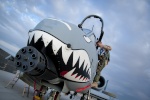
messages : 21656
Inscrit le : 15/09/2009
Localisation : 511
Nationalité : 
Médailles de mérite :  

 |  Sujet: Re: Armes made in Spain Sujet: Re: Armes made in Spain  Sam 17 Avr 2010 - 14:35 Sam 17 Avr 2010 - 14:35 | |
| interessant  une sorte de ELS allemand utilisé dans les Tornado ECR,ou le HTS des F16 CJ _________________  | |
|   | | Invité
Invité
 |  Sujet: Re: Armes made in Spain Sujet: Re: Armes made in Spain  Sam 17 Avr 2010 - 14:43 Sam 17 Avr 2010 - 14:43 | |
|  Pour Younes Pour Younes - Citation :
- ECM/ESM ALDEBARÁN...
SPAIN INVESTS IN ALDEBARAN, FEATURE
Indra is industry prime for Aldebaran, a Spanish defense ministrytechnology development program aimed at producing a family ofscaleable, modular and logistically standardized EW systems to meetthe operational needs of the Spanish Navy. Export variants are beingmarketed under the name SLQ-380.Sea trials of Aldebaran began in 1995. Three systems have beendelivered to date, with both the amphibious ship, Galicia, and theauxiliary oiler replenishment ship, Patino, outfitted.Other auxiliaries are to be equipped with the ESM portion, while afull Aldebaran suite with DRFM-based multibeam ECM will be installedaboard four new F 100-class frigates.Many Aldebaran components are proprietary to Indra, notably the IFMand superheterodyne receivers, multibeam antennas and pre-processorboards. The company has also developed the Ada-based applicationscode (running under UNIX on Sun Microsystems hardware).Thesingle-operator console controls all passive and active functions,and can also initiate decoy deployment.Indra says Aldebaran is able to operate in dense signal environmentsof over 2 million pps. A basic library contains 6,000 radar modes,with an operator library of 256 radar modes.The derivative SLQ-380 export family is scaled through a series ofbuilding blocks, each adding incremental functionality. These are asimple threat warner ESM using flat spiral antennas and a wide-openreceiver; a more advanced ESM using 8-18GHz interferometer arraysfor cueing of hard-kill and soft-kill systems; an ELINT versionwhich uses a spinning DF antenna and a superheterodyne receiver fornarrow band, fine grain emitter analysis; and ECM options for eithersteerable or more advanced multibeam jammers.
 http://www.janes.com/articles/International-Defence-Review-99/SPAIN-INVESTS-IN-ALDEBARAN.html http://www.janes.com/articles/International-Defence-Review-99/SPAIN-INVESTS-IN-ALDEBARAN.html - Citation :
- All ESM and ECM functions can be controlled from a single-operator console. The Aldebaran-based SLQ-380 is being marketed internationally.
As noted above, the German K-130 corvette is to be equipped with the Ewation UL 5000K electronic-support-measures/electronic-countermeasures (ESM/ECM) system, based on the Aldebaran system developed for Spain's F100 frigate.
The system consists of an ESM subsystem, working in the frequency range of 2-18 GHz, and an ECM subsystem (Elnath) for active radar jamming. The system intercepts and analyses radar signals and classifies them according to data stored in its reprogrammable threat library.
It has multiple-target-tracking capabilities and a high signal- and bearing-measurement accuracy. Interestingly, the system does not control the other countermeasures directly but only provides inputs to a combat-management system, which uses multiple data sources (such as radar, Link 11/16/22) to control the countermeasures launchers. Ce système équipe à les principales unités de l'Armada comme les F-100 par exemple, aux corvettes allemandes K-130 (Ils étaient intéressés aussi dans ce système pour leurs frégates F-125, mais je ne sais pas comment a fini l'affaire) et est un des candidats principaux pour équiper aux AWD australiens.
Dernière édition par AMRAAM_88 le Sam 17 Avr 2010 - 14:53, édité 1 fois |
|   | | Invité
Invité
 | |   | | Yakuza
Administrateur


messages : 21656
Inscrit le : 15/09/2009
Localisation : 511
Nationalité : 
Médailles de mérite :  

 |  Sujet: Re: Armes made in Spain Sujet: Re: Armes made in Spain  Sam 17 Avr 2010 - 15:16 Sam 17 Avr 2010 - 15:16 | |
| ..parceque nouveau  _________________  | |
|   | | Contenu sponsorisé
 |  Sujet: Re: Armes made in Spain Sujet: Re: Armes made in Spain  | |
| |
|   | | | | Armes made in Spain |  |
|
Sujets similaires |  |
|
| | Permission de ce forum: | Vous ne pouvez pas répondre aux sujets dans ce forum
| |
| |
| |
|

